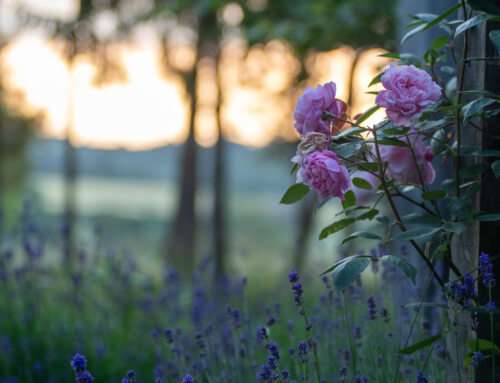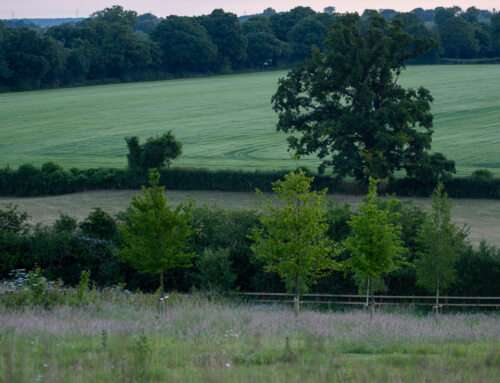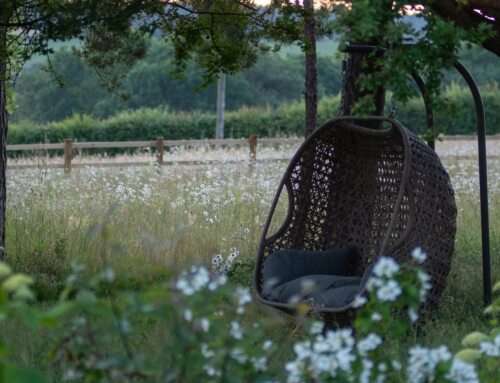Put Those Bedding Plants to Bed…
By Jared Hutchings
…and Re-discover Herbaceous Perennials!
Around about this time of year, with those pesky late frosts safely behind us, my lovely mum proudly announces “I’ve got the bedding plants in” and hurries me outside to witness the neat row of “geraniums.”
“They’re pelargoniums, mum”, but she ignores my botanical pedantry. I duck to avoid knocking my head on a hanging basket full of vibrantly coloured petunias, and she gently steers me towards the other end of the terrace.
“I’ve lost my antirrhinums to rust for two years running”, she adds, “so I’ve given up on them. This year we’re doing….erm…”
“African daisies, mum – Osteospermum.” She raises an eyebrow, as if I have said something rude, and I cast my eye along the monoculture of little plants, equally spaced, with plenty of bare soil left in-between for the weeds to thrive.
My parents passed onto me a love of gardening, but like all birds that flew the nest long ago, I have formed my own views about gardening. It’s best not to upset the parents, so let me share them with you instead (“mum struggles with the “interweb”).
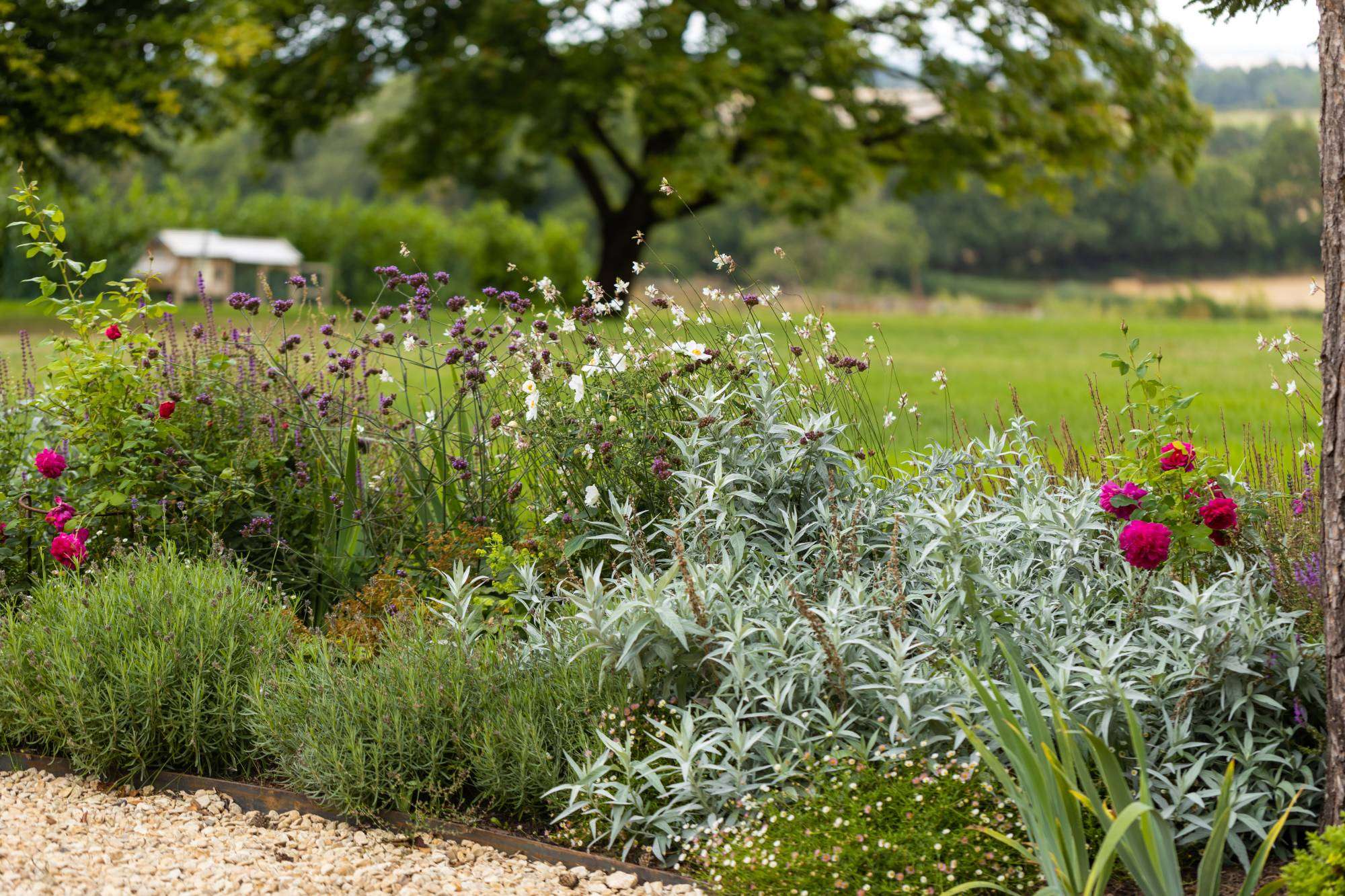
There’s a long ritual in Britain, enthusiastically embraced by the Victorians, for planting neat rows of bedding plants every spring. Psychedelic orange marigolds in neat rows at the front of flower beds, window boxes brimming with red ‘geraniums’, pots of pinks (Sweet Williams), marguerites wooing you with their Mediterranean eyes, and hanging baskets – pre-stuffed by the garden centre – with hot pink Petunias and trailing Lobelia. From April to June, space for herbaceous perennials at the garden centres are elbowed out of the way for these bedding plants, and the front of supermarkets are festooned by trolleys of them, wilting for lack of water in the heat. Once back home they reward us with vibrant, but rather un-subtle colour. November comes, and the petunias and marigolds turn to mush, whilst the marguerite turns into a grey skeleton, as if they puffed too many Gauloises. Some of us hurry to get the pelargoniums into the greenhouse to get them through the winter – a handful of survivors make it, but look rather lacklustre compared to a freshly bought crop of new bedding plants the following year.
This happens because these plants are either annuals – they’re designed by nature to just live for one year, such as marigolds – or because they are tender perennials, like Marguerites, meaning that they would come back the following year if it wasn’t for the frost and low temperatures of the British spring. A smaller group, like pinks, are biennials or short-lived perennials, meaning they flower in their second year, possibly stagger onto a third year, and then die.
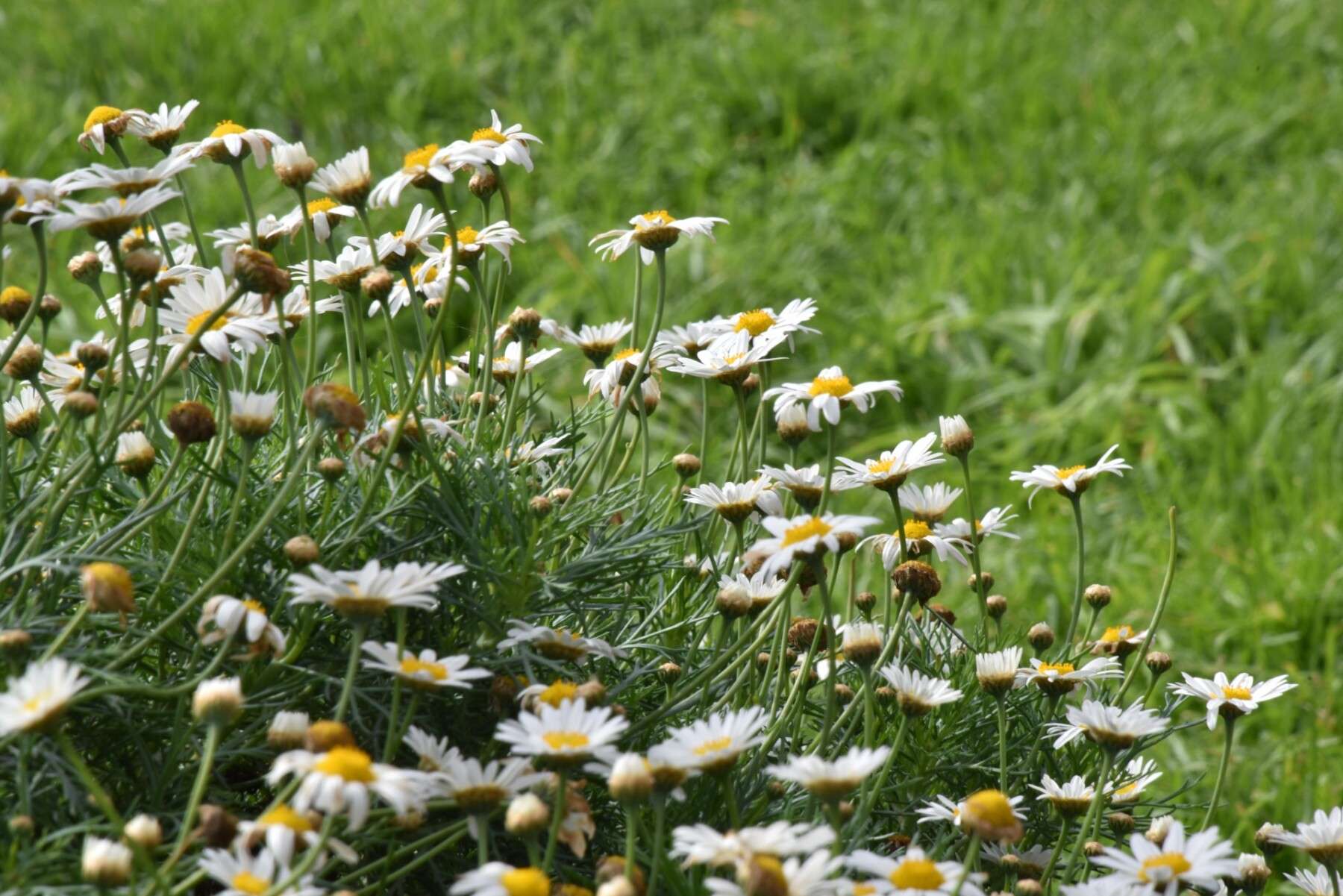
Marguerites
It makes more sense to buy a hardy perennial for my herbaceous borders or pots, because they will come back again and again, year after year, with no need to shelter them in the greenhouse. I’m saving myself money, and the hassle of replacing them.
Many of us buy bedding plants because they flower continuously across the summer months. I know that there are perennials that put on a spectacular show for only a few weeks, and then just sit there looking dull – think peonies in particular- but I have a long list of perennials that will earn their space in the flower bed for weeks and weeks. Some of my favourite examples include: daisy-flowered Heleniums and Echincacea; spires of Persicarias, Agastache and hardy Salvias; sedums (from the genus Hylotelephium), the tubular flowers of penstemons; Japanese anemones (Anemone x hybrida and Anemone huphensis) for late summer and autumn; and of course hardy geraniums. Happy planting!
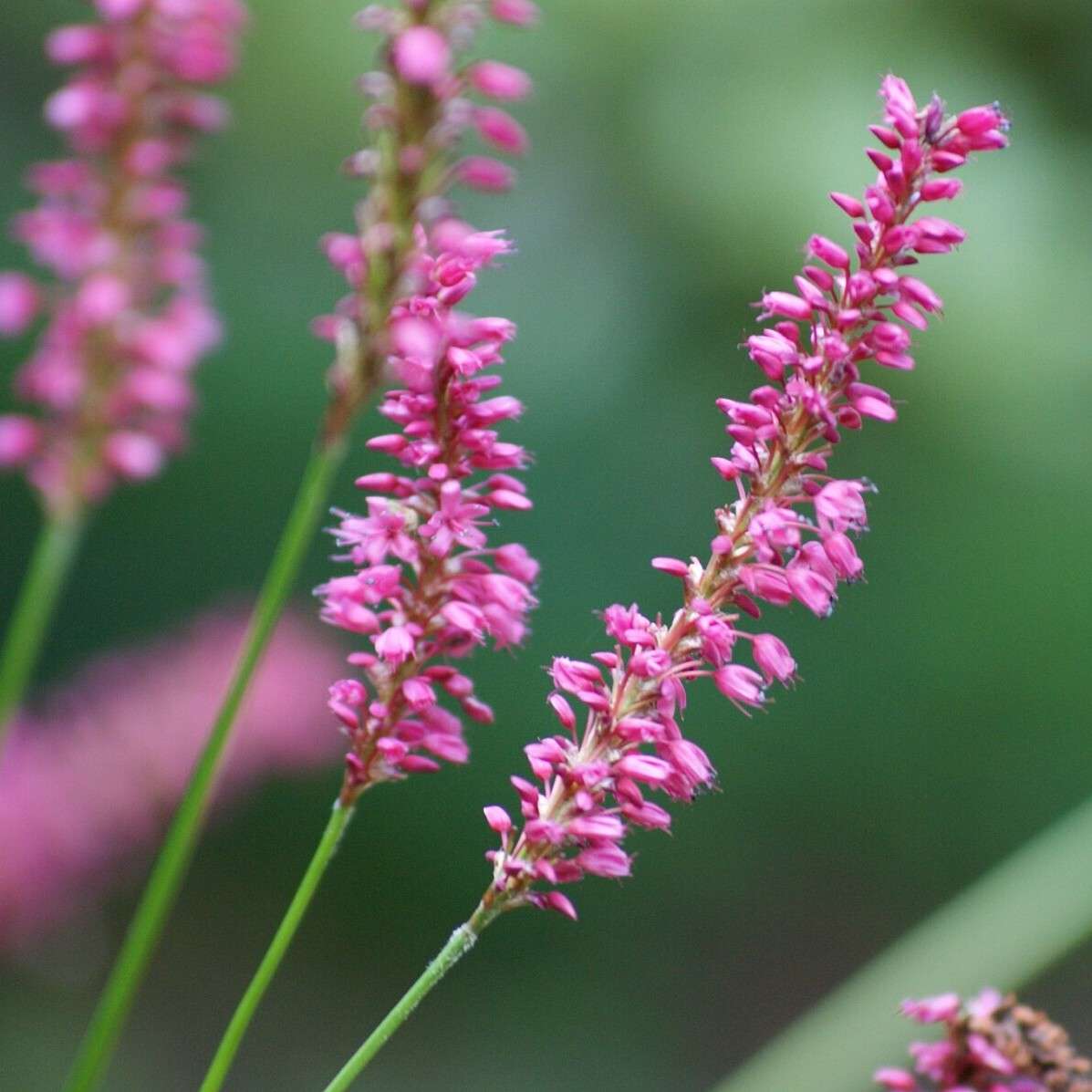
Spires of Persicarias
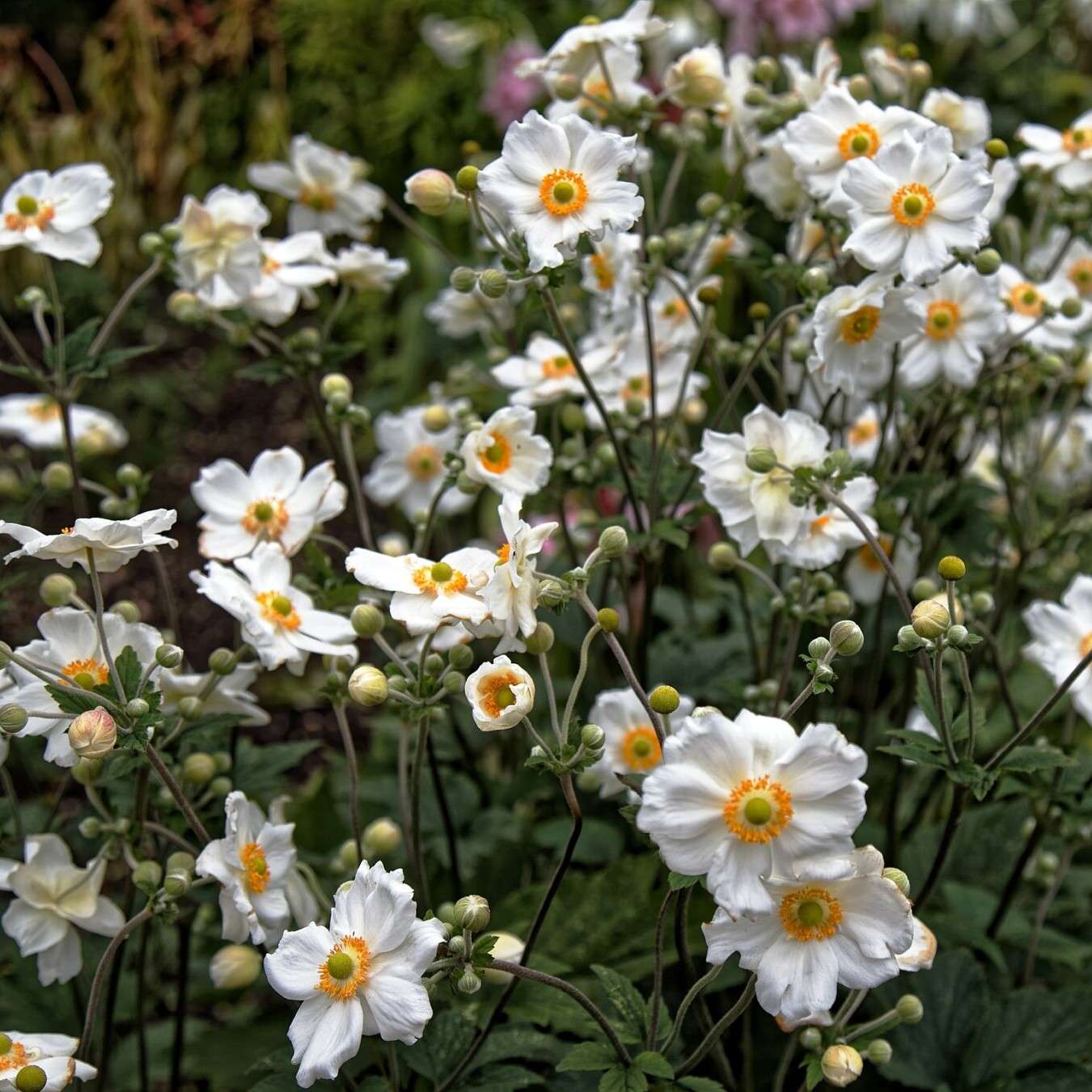
Anemone x hybrida
Let’s take a deeper look at “geraniums”. Those bedding plants with scented wavy-edged leaves are Pelargoniums, and originally from South Africa and Australia, which is why they don’t appreciate the British winter. They are different from what are sometimes called “hardy” geraniums, which is a huge genus of fantastic garden plants, typically in shades of lilac, blue, purple or white, some being evergreen (Geranium x cantabrigiense), but most being deciduous. They are long flowering, great for ground cover, and there are miracle species which light up those problems spots, such as Geranium phaeum for dry shade.
There are also hardy perennials that look like some of the nation’s favourite bedding plants. If you love white daisy flowers, why buy a new marguerite (Argyranthemum frutescens) every year, when you can buy the perennial Shasta daisy (Leucanthemum × superbum). If you want a coloured daisy flower, rather than buying African daisies or Cosmos, why not buy perennial asters (e.g. Aster × frikartii ‘Mönch’).
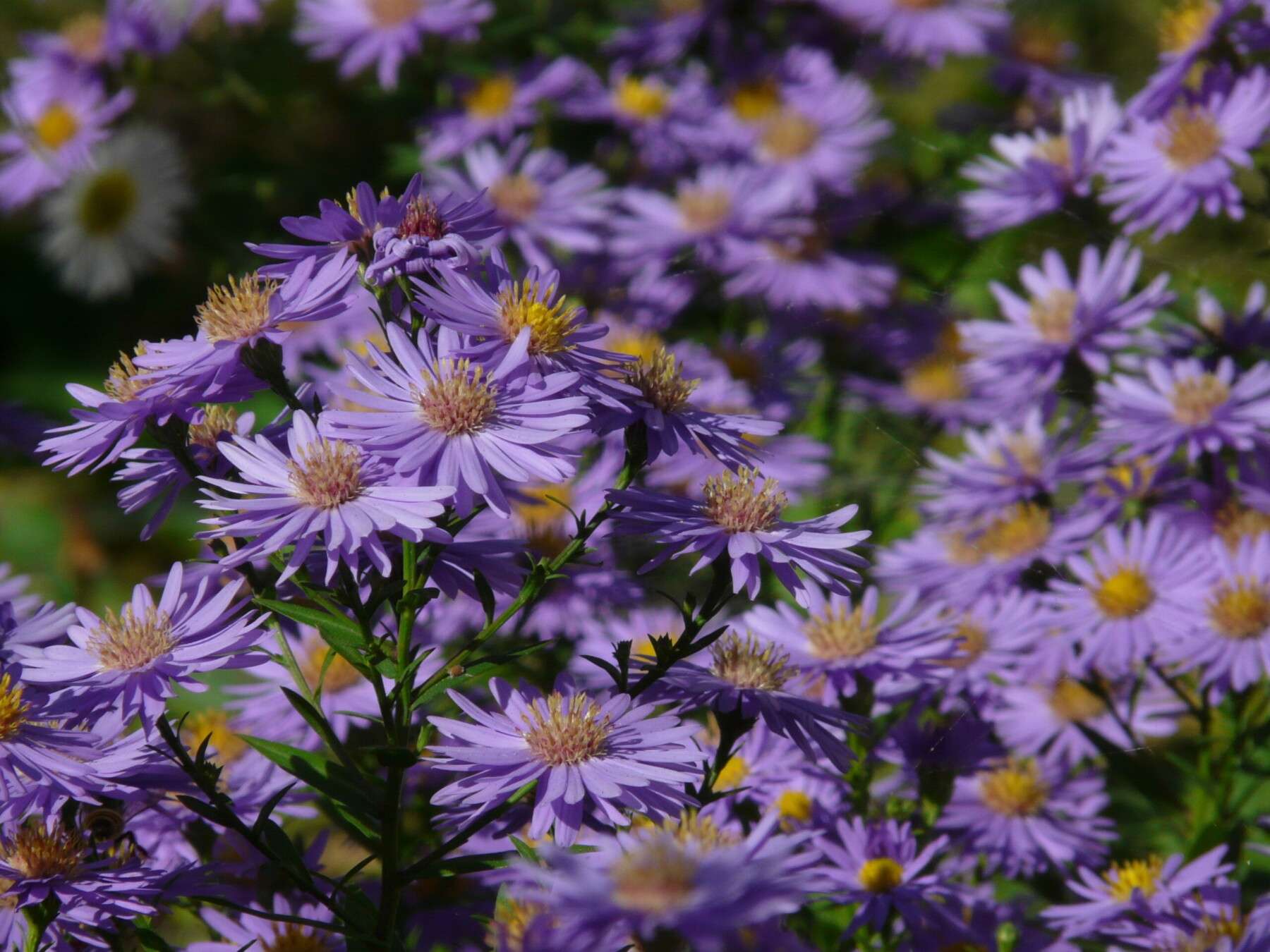
Aster × frikartii ‘Mönch’
You might relish the task of re-freshing your pots on the sunny terrace every year, but if you’d rather not, then forget the petunias, and think about using hardy salvias in lilac or purple for subtle elegance (e.g. Salvia nemorosa), blue or white Agapanthus to add a bit of sophistication, geums if you are after some hot red or orange colours, or scabious for a cosy cottage look.
I have to concede on hanging baskets. There is little room for soil in the baskets, and the soil will need refreshing each year, which means pulling everything out anyway. There are few perennials that are both small and have a trailing habit like lobelia or petunia. I have a very soft spot for calibrachoa in a hanging basket by my front door (a tender biennial), because they are happy in shade, have a trailing habit, and come in dusky subtle purples and reds – my favourite dish.
This is an old debate. William Robinson, the nineteenth century owner of one of my favourite gardens – Gravetye Manor – took his peers to task in the late nineteenth century for their love of bedding plants, and in particular those intricately laid out beds of gaudy bedding plants in public parks. He introduced us to the idea of choosing the right plant for the right place, for dense planting, and for a more naturalistic look to planting. I’m sure this is an issue that will continue to divide the nation.

